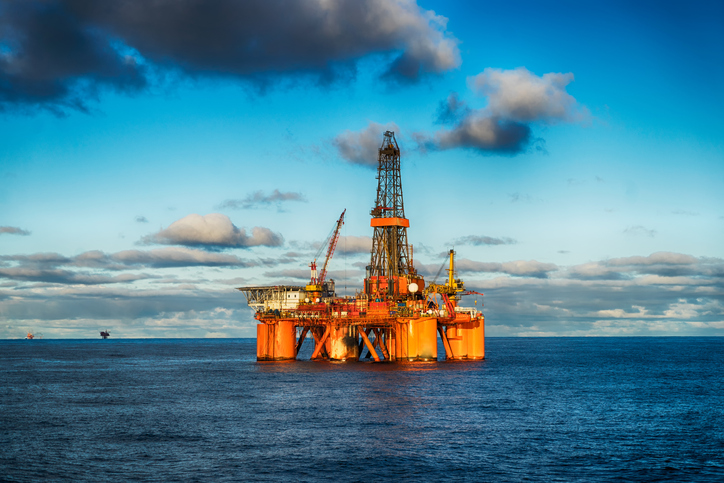
 Structures such as offshore drilling platforms supported by steel piles may be protected with either sacrificial galvanic anode systems or impressed current systems.
Structures such as offshore drilling platforms supported by steel piles may be protected with either sacrificial galvanic anode systems or impressed current systems.
Structures such as steel bulkheads, steel piles supporting piers or wharfs, offshore drilling platforms, and other similar structures may be protected with either sacrificial galvanic anode systems or impressed current systems.
Galvanic anode systems in seawater, for the most part, use much heavier anodes than those used in soil. This is because it is possible to obtain high current from them in a low-resistivity seawater environment and because the corrodible mass is needed to provide reasonably long life.
For structures that can be polarized, a low-potential galvanic anode material such as zinc or aluminum is generally preferable to a high-potential material such as magnesium. Magnesium will work perfectly well, but may discharge more current than needed.
Zinc or suitable aluminum alloy anodes can polarize a steel structure in seawater to within a few millivolts of the potential of the anode itself. Assume that potential is 50 mV, although it can be less. This means that the anode current will stabilize at a value sufficient to maintain polarization.
If magnesium anodes are used, however, the structure does not tend to polarize beyond ~–1.1 V vs. a silver/silver chloride (Ag/AgCl) electrode (SCE) because the hydrogen overvoltage potential is reached and this results in the evolution of free hydrogen. This means that with a magnesium working voltage of ~ –1.4 V vs. SCE, there will be a driving voltage of ~0.3 V. Thus, on a comparable basis, the magnesium will discharge about five times as much current as is actually required to achieve the required polarization.
Because less powerful anodes can provide an efficient CP system, the surplus current from a more powerful anode is, in effect, wasted. However, there is one advantage. The more cathodic voltage provided by magnesium anodes tends to force the deposition, in seawater, of a thicker protective calcareous coating on the structure surface than would be obtained with less powerful anodes.
Special chemical backfills are not needed in the uniform seawater environment because galvanic anodes work satisfactorily without them.
Impressed current systems for fixed seawater structures may use suitable anode materials, without backfill, suspended in the seawater from the structure being protected or placed on the ocean floor. In the past, various materials such as treated graphite, high-silicon cast iron, platinized titanium, or lead/silver have been used as anodes. However, the introduction of highly efficient, dimensionally stable anodes (DSAs), which are basically mixed metal oxide coatings on titanium, has rendered these other anodes almost obsolete.
Particular attention must be given to the design of the rectifier placement, header cable distribution system, and anode suspension or placement details. Above-water components are subject to severe marine atmospheric attack, whereas other portions must be protected from or designed to withstand the mechanical forces exerted by moving seawater as well as by water-carried debris or shipping traffic.
This article is adapted from Corrosion Basics—An Introduction, Second Edition, Pierre R. Roberge, ed. (Houston, TX: NACE International, 2006), pp. 514-516.

Recent Comments